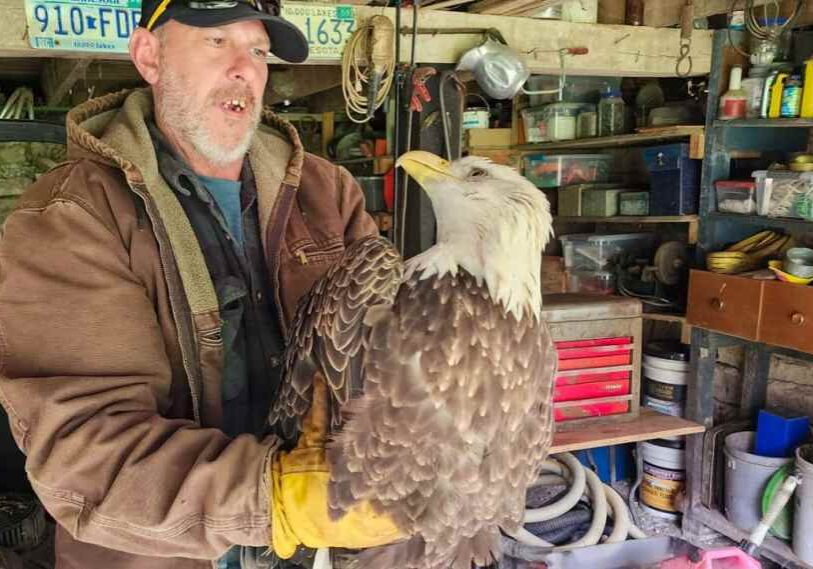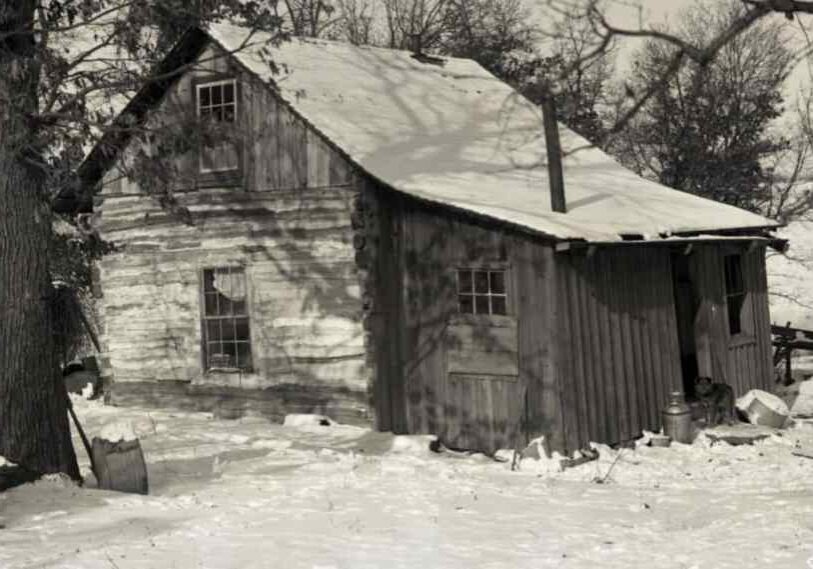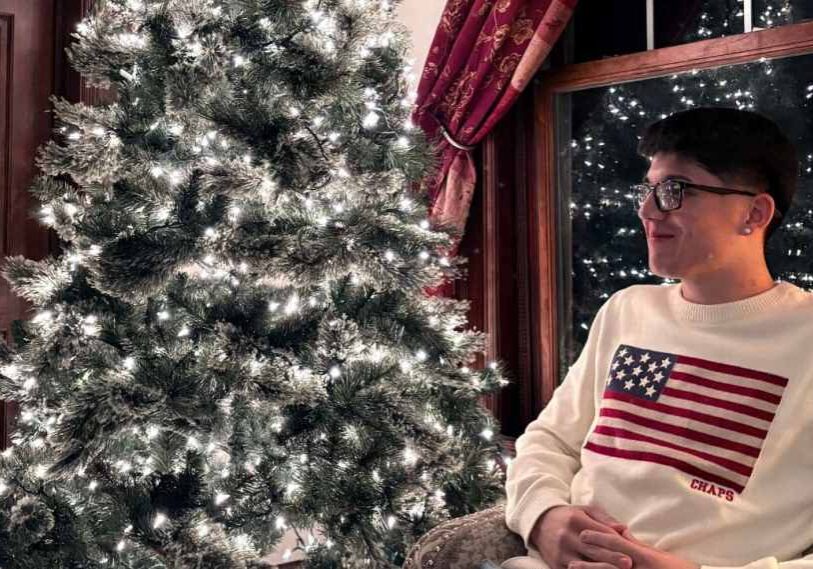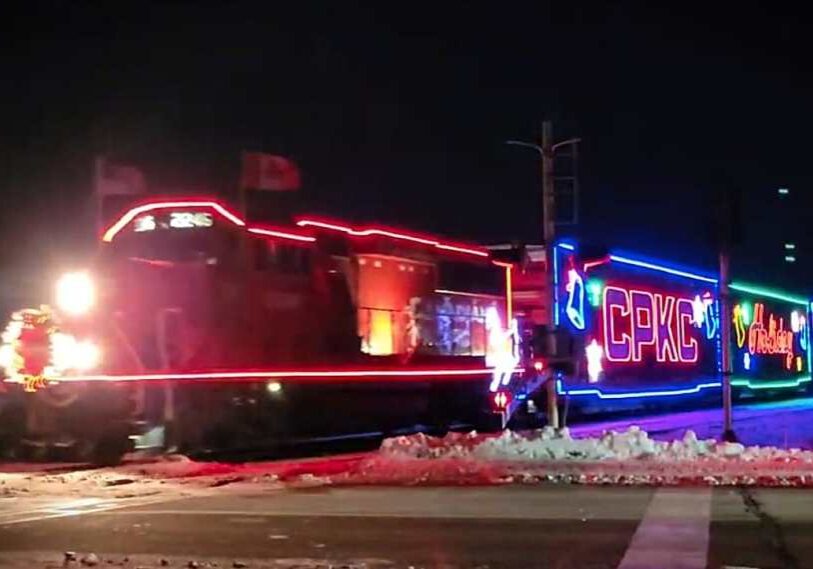Wood-bow Hunting Challenges a Hunter’s Skills

HOUSTON — Lee Whipkey is on his lunch break from working at AcenTek, doing what he does naturally this time of year — shooting his wood-bow and arrows so he’s ready when a deer comes within range in the fall.
The Rushford man doesn’t seek trophy bucks, he just loves being in the woods, being with nature, and looking for more memories. He’s what the region needs to keep down its deer herd because the Minnesota Department of Natural Resources (DNR) is trying to lower deer numbers to lessen chances of deadly Chronic Wasting Disease spreading. It’s already tallied more than 100 cases in the state, many in southeast Minnesota, and the fear is that it will spread. Once a deer gets sick, it’s fatal–but the deer can pass it on before slowly dying.
Every hunter has his or her own story of getting into hunting, the many failures and the times they put venison on the table. There probably is no such thing as a typical hunter. Why we hunt is often hard for non-hunters to understand, but that’s okay.
One hunter’s story
After stringing his 60-pound recurve bow, Whipkey begins shooting, trying to make each shot as exact, precise, a mirror of bullseyes past. He’s good. Most arrows thunk into the bullseye. But at farther targets, arrows stray. He says he knows his limit for an accurate kill shot and will only take shots at the shorter distance.
After shooting, we sit and chat. Both of us deer hunt, he’s been at it longer.

Whipkey pulls out arrows, all in the bullseye. He started hunting with a bow when he was 12.
I once hunted with a wooden recurve but shoulder surgeries stopped that. I miss those quiet times with total camouflage and the silence of the woods. And we laugh at how often deer have flummoxed us, scented or sensed us no matter our precautions.
We were friends and admirers of Lamont Granger, who once owned a wood-bow shop in Rochester and often said, “Don’t forget, they are full time deer and you’re a part-time hunter.” Indeed.
Whipkey says he’s been hunting since he was 12 – that was about 30 years ago. He started with a bow. “My dad (Ron Kraft) was a bow hunter and I wanted to do what he did, like most boys I guess.”
Whipkey also hunts with a shotgun and has a muzzleloader though he hasn’t used it for years.
Through all those years, he’s hunted deer, often successfully.
Why, I ask, why keep at it?
He thinks about it. “Good question. I guess it’s the challenge. I put my own limitations on the gear I use to get something out of it, that’s rewarding to me. It’s not for everybody.”
Arrows shot from wood-bows are much slower than those from the more complicated modern compounds. Their arrows in turn are much slower than bolts shot from crossbows.
He tried a compound. “I decided I didn’t need those gadgets, things to break, things to go wrong in the woods….I wanted to get back to something simple. Not that shooting recurve is simple,” he says. “It’s not, there’s a lot more things that you have to do to make a good shot. … I have to practice constantly to stay accurate. I have to do everything the same all the time.” He has to align his body just right. It’s more of a challenge.
“I like being in the woods, I like the peace, just getting away from technology for a while.” He’s a network engineer at AcenTek.

Lee Whipkey takes aim with his wooden recurve bow.
It’s been said there are five stages of being a hunter or angler: wanting to shoot or catch something, seeking a limit, wanting a trophy, limiting your gear for the challenge and then just being a hunter or angler. That last one is hard to define.
We agreed neither is at the fifth stage but he’s known some. “A lot of older folks I hunt with are just as excited to see someone else in the hunting party be successful or maybe their kid or grandkid be successful. They would forgo their own deer to see that … the reward is different.”
I like that definition. I’d like to get there sometime, too.
Not everyone hunts, Whipkey says. That’s okay. If they did, the woods would be really crowded. “I just hope that people who don’t hunt can accept that this is our tradition that we love. It’s not something that’s cruel or bad.”
Chronic wasting disease
It’s true the DNR is trying to keep down numbers in our southeast corner of Minnesota, while up north–after several hard winters–deer numbers are down so much that the DNR is limiting who can shoot does. Down here, hunters can take up to five deer, but antlered bucks are limited.
Whipkey knows he helps keep down numbers but doesn’t think about it. “If that’s all it was, I probably wouldn’t do it,” he says. “I don’t kill as many deer as other people do but that’s okay.” He’s shot a few dozen probably.
When he began hunting 30 years ago, deer numbers in our area were also lower and you needed a special permit to shoot antlerless deer (does and first-year bucks). That has really changed, he says.
“I would say in the late 90s is when things really started to increase,” Whipkey says. “(In winter) it was nothing to see a herd of 50 or 100 out in the field or eating on cedar boughs and things like that … at first it was neat to see and then it just got common, you don’t think about it being abnormal. We are fortunate in this part of the state and hunting is good.”
Even with all the extra chances to shoot deer, he doesn’t think numbers have changed much.
Are there too many? Now that’s a tough question, he says. “That just depends on who you ask. The insurance companies think we’ve got too many. There are areas where (others) say we have too many.”
But what do you base that on? Crop damage, road kills, success rate of hunting? “What is your basis for too many? I don’t know.”
He’s heard that some hunters have registered five deer–but not many of them do. “It’s great that we’ve got a liberal bag limit but I don’t know of too many people that take more than what they use. I don’t eat a lot of deer.”
He hasn’t heard much about CWD either. It’s just part of the region.
It’s about time for Whipkey to get back to work. “I’ve been out (hunting) a few times (when it was hotter), seen some deer. But everything has to be just right when it’s this warm.” He has to be extra sure of the shot so the deer isn’t out overnight.
We chat a week later and he says weather had cooled and his desire to get out in the woods has heated. “I’m getting pretty excited right now,” he says. November is always that way, with the bucks in the rut. “I want to get rolling here.”






